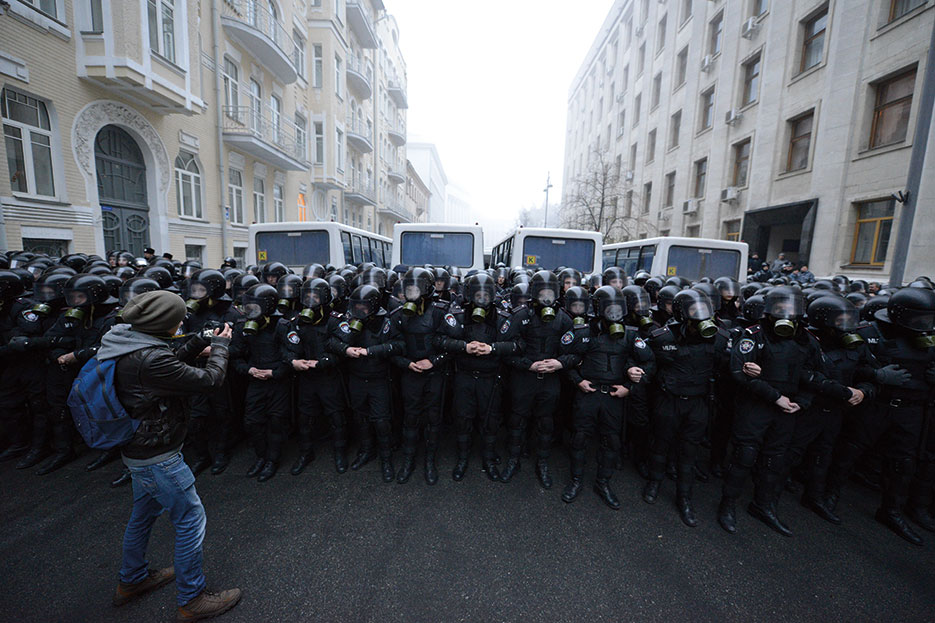Letter
10 àïðåëÿ 2014
To the Editor: I write in response to Derek S. Reveron and James L. Cook’s article “From National to Theater: Developing Strategy” that appeared in Joint Force Quarterly 70 (3rd Quarter 2013). I agree wholeheartedly with the authors on their position that only “vital” national interests are worth dying for. However, I caution against accepting their idea that national interests that are (merely) “important” are necessarily worth killing for.
To begin, air strikes by manned aircraft carry risks. Reveron and Cook posit the 2011 North Atlantic Treaty Organization air campaign to prevent genocide in Libya as worth killing for, but not worth dying for. But we have to keep in mind that Major Kenneth Harney and Captain Tyler Stark had to eject from their F-15E over Libya on March 21, 2011. If we had not safely extracted them, and, instead, the U.S. public had watched video of their bodies dragged through the streets or hung from a bridge, the Obama administration would have quickly learned whether the American public was ready to see U.S. Servicemembers dying for this cause.
Looking back to March 27, 1999, in Serbia, when Lieutenant Colonel Dale Zelko, flying an F-117A stealth fighter, was shot down by an SA-3 missile, we should recognize that anytime American air crews fly into a combat zone, they risk being unable to fly home from that mission. I suggest manned air strikes should be flown only when U.S. vital national interests are at stake since the crews risk death and cannot kill with absolute impunity.
It might be tempting to argue that unmanned aircraft, cruise missiles, or ballistic missiles do not carry that same risk and might satisfy this new criterion of important interests that are worth killing for but not worth dying for. That would be a grave error for at least two reasons. First, the authors should consider Winston Churchill’s statement mentioned in their own article: “The statesman who yields to war fever must realize that once the signal is given, he is no longer the master of policy but the slave of unforeseeable and uncontrollable events.” With a near-peer adversary, it would not be surprising if missile strikes triggered counterstrikes against U.S. forces or territory. But even with a lesser foe, asymmetric warfare might be employed to retaliate against America in a way that caused casualties.

Police barrier at pro–European Union rally in Kiev attended by over 100,000, November 24, 2013 (Flickr/Ivan Bandura)
Second, if the country we strike has not attacked the United States or an ally—or we do not have a United Nations (UN) Security Council Resolution authorizing the use of force against them—the United States would be committing an illicit act of aggression that would technically constitute initiating an act of war. While UN Ambassador and Pulitzer Prize–winner Samantha Power is an advocate of “R2P” (a responsibility to protect against genocide, war crimes, crimes against humanity, and ethnic cleansing), the third pillar of the R2P global norm unanimously adopted by heads of state and government at the 2005 UN World Summit states, “If a State is manifestly failing to protect its populations, the international community must be prepared to take appropriate collective action, in a timely and decisive manner and in accordance with the UN Charter.” In other words, R2P is expected to use the other instruments of national power, rather than military force, except when a UN Security Council Resolution authorizes that use of force.

View of Zaatari Camp for Syrian refugees as seen on July 18, 2013, from helicopter carrying Secretary of State John Kerry and Jordanian Foreign Minister Nasser Judeh (State Department)
I believe there is still no better test of whether to employ U.S. military force than the six-point test first articulated by Secretary of Defense Caspar Weinberger in 1984 (and referred to by the authors as the Weinberger Doctrine):
- The United States should not commit forces to combat overseas unless the particular engagement or occasion is deemed vital to our national interest or that of our allies.
- If we decide it is necessary to put combat troops into a given situation, we should do so wholeheartedly, and with the clear intention of winning.
- If we do decide to commit forces to combat overseas, we should have clearly defined political and military objectives.
- The relationship between our objectives and the forces we have committed—their size, composition, and disposition—must be continually reassessed and adjusted if necessary.
- Before we commit combat forces abroad, there must be some reasonable assurance we will have the support of the American people and their elected representatives in Congress.
- The commitment of forces to combat should be a last resort.
In 2003, some advocates of “shock and awe” considered the Weinberger Doctrine outdated by claiming that the United States no longer needed to honor the second point because we could succeed with a smaller force that outmaneuvered the foe. Later, we came to regret not having enough U.S. forces on the ground to provide stability in Iraq immediately after the hot war ended. I recommend the Weinberger Doctrine also be considered for unmanned aircraft or missile strikes when under the control of the U.S. military. We should not be willing to kill for a national interest that we are not ready to risk dying for.
American security policy experts have recognized that articulating and prioritizing national interests are fundamental to knowing what resources to commit ever since Hans J. Morgenthau’s In Defense of the National Interest: A Critical Examination of American Foreign Policy was published in 1951. Each administration can have a slightly different take as to which are vital national interests.
So which national interests are worth killing for? In 2000, the Commission on America’s National Interests defined vital national interests as “conditions that are strictly necessary to safeguard and enhance Americans’ survival and well-being in a free and secure nation.”1 Those vital national interests agreed upon by the commission can be summarized as:
- prevent, deter, and reduce the threat of nuclear, biological, and chemical weapons attacks on the United States or its military forces abroad
- ensure U.S. allies’ survival and their active cooperation with the United States in shaping an international system in which we can thrive
- prevent the emergence of hostile major powers or failed states on U.S. borders
- ensure the viability and stability of major global systems (trade, financial markets, supplies of energy, and the environment)
- establish productive relations, consistent with American national interests, with nations that could become strategic adversaries.
When national interests at stake are less than these, we should not be willing to have American Servicemembers die or kill for them.
—Commander Thomas J. Reid,USN (Ret.)
Defense contractor in support of
Space and Naval Warfare Systems Command
Note
- Robert Ellsworth, Andrew Goodpaster, and Rita Hauser, co-chairs, America’s National Interests: A Report from The Commission on America’s National Interests(Washington, DC: The Commission on America’s National Interests, July 2000), available at <http://belfercenter.ksg.harvard.edu/files/amernatinter.pdf>. See also Graham Allison, U.S. National Interests, PowerPoint briefing, February 18, 2010, available at <https://dnnpro.outer.jhuapl.edu/media/RethinkingSeminars/021810/Allison_ppt.pdf>.
Âåðíóòüñÿ íàçàä